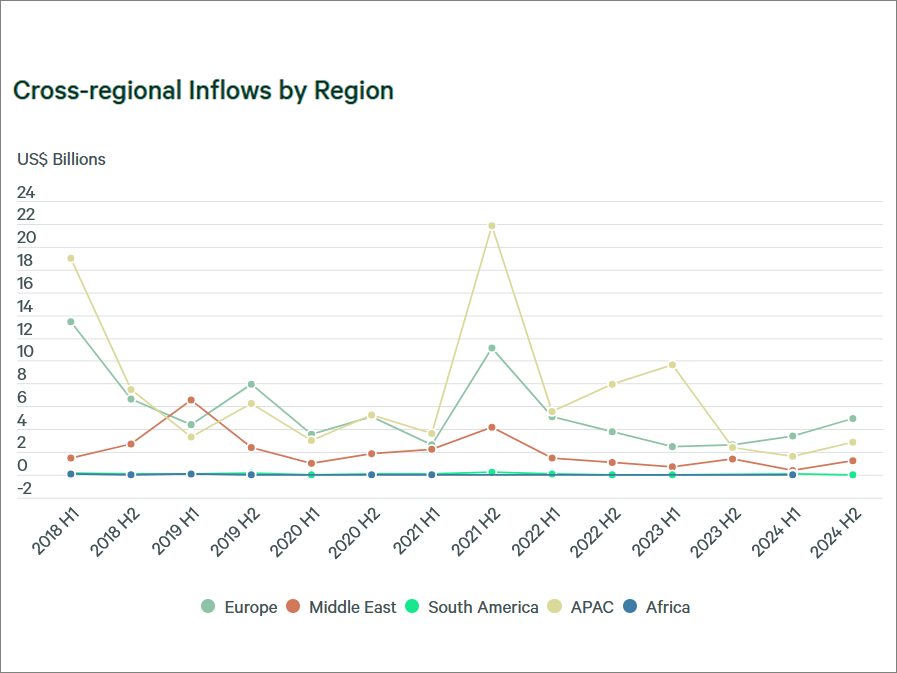Scarcer Debt for CRE Under Scrutiny
Small and regional banks account for a significant share of CRE lending. Some are under increased stress.
The aftershocks of March’s financial tumult, from the collapse of Silicon Valley Bank and Signature Bank, to the regulator-arranged proposed takeover of Credit Suisse by UBS, are being felt in the commercial real estate sector.
With capital already scarce relative to the low-interest cheap-debt environment of recent years, a sharper focus on risk management and a tightening of underwriting standards could constrain lending further.
Banks hold the majority of U.S. commercial real estate debt, as well as most of the country’s multifamily mortgage debt, and with smaller and regional banks active in commercial real estate lending, their fate is a major concern for the sector. Commercial banks held 62 percent of outstanding commercial and multifamily mortgage debt as of the third quarter of 2022, according to data from the Mortgage Bankers Association, with CRE loans comprising 36 percent of that debt. Residential mortgages made up 64 percent.
Lenders with less than $250 billion in assets, meanwhile, account for approximately half of U.S. commercial and industrial lending, according to a recent Goldman Sachs report authored by Chief U.S. Economist David Mericle and fellow economist Manuel Abecasis.
“To the extent that banking stress that started with the resolution of Silicon Valley Bank has an impact in lending, it’s likely to be concentrated in a subset of small- and medium-sized banks,” the bulge bracket firm said in a recent article on its website.
READ ALSO: Why the Fed Will Keep Raising Interest Rates
Smaller banks, including regional institutions, have been more active in commercial real estate lending by proportion of their loan book, according to Indy Karlekar, global head of real estate research and strategy at Principal. Local banks will often provide capital to small commercial projects that may otherwise have difficulty obtaining financing. While these institutions are less exposed to the residential sector, tightening of financial standards will have major implications for the already subdued CRE debt markets.
The recent upheaval in the banking sector is “unlikely to lead to systemic contagion issues given the swift steps taken by regulators and central banks,” said Karlekar, though there will likely be an increased focus on risk management, including “increased scrutiny of existing debt and future underwriting tied to commercial real estate.” That is likely to lead to “some pullback and greater selectivity on loan profiles, which is likely to accelerate the process of price discovery in stressed assets, particularly in the office sector.”
Banking woes compound already-increased cost of capital
The lending landscape was already challenged as of early March, before the banks were in crisis, said Andrew Spindler, senior vice president in Green Street‘s advisory group. Commercial lending and CMBS issuances had already slowed, with smaller players filling in part of the funding gap. “There’s been relatively little to no transactions across most property types.”
There were 7 percent fewer unique lenders active across all property sectors in the fourth quarter of 2022 compared to the same period in 2021, Jim Costello, executive director at MSCI Research, wrote in a recent note.
“In terms of the financing markets, you just haven’t moved unless you’ve absolutely had to,” said Spindler, who noted that many in the sector were determined to wait out monetary uncertainty until later in the year, when there would be “more clarity around interest rates” and “a greater backlog of people wanting to do things, whether that’s transact, whether that’s go public, whether you’re talking about REITs or shoring up near-term financing.”
With the turmoil of the past month, however, the economic calculus has changed. “Now the conversation has completely shifted to where you’ve added a whole other layer of uncertainty to the picture, whereas before you were just waiting for interest rate clarity,” said Spindler. “You’re still waiting for that clarity, inflation hasn’t gone away (but) now you’re dealing with banking uncertainty and financing uncertainty on top of it.”
“More scarce and expensive debt is likely to pressure transaction volumes, but also accelerate price discovery, particularly in property sectors where valuations are under stress,” said Karlekar, with office assets potentially most vulnerable given the uncertainty around their valuations.
Private debt market could offer limited recourse
Within the real estate sector, the only private asset class that grew in fundraising every year from 2011 to 2022 was private debt, according to a report from McKinsey & Co. “Over the longer term, growth has been driven by a dramatic expansion in direct lending strategies” accounting for “73 percent of fundraising growth in the last decade,” the consultancy said in 2022.
While an attractive source of financing, the private debt market will be unable to fully pick up the slack from traditional banks. “Reduced appetite for CRE loans among commercial banks would increase the cost of capital but also open the opportunity set to non-bank lenders to expand their footprint,” said Karlekar. “While an increase in non-bank lending would be helpful to real estate, it would not be enough to bridge the gap if there is a material decline in loan activity by commercial banks.”
Meanwhile, more consolidation remains a possibility, both within the U.S. banking sector and globally, Karlekar noted. “While systemic risk for the U.S. appears to be a small likelihood, the closure of two large regional lenders and further potential consolidation opens questions around broader debt exposure in banks, particularly to commercial real estate at a time when values are deteriorating, especially in the office sector.”
However, there is some cautious optimism that a more robust financing market is on the horizon. That would require the financial sector entering the second half of the year with a minimized risk of bank failures and a signal that the Federal Reserve had finished its flurry of rate hikes.
“For those that can batten down the hatches and weather the storm—they don’t have to transact, they don’t have to go out and find financing—they probably will,” said Spindler. “A few more months of quiet is my guess and then hopefully the banking situation will stabilize.”








You must be logged in to post a comment.